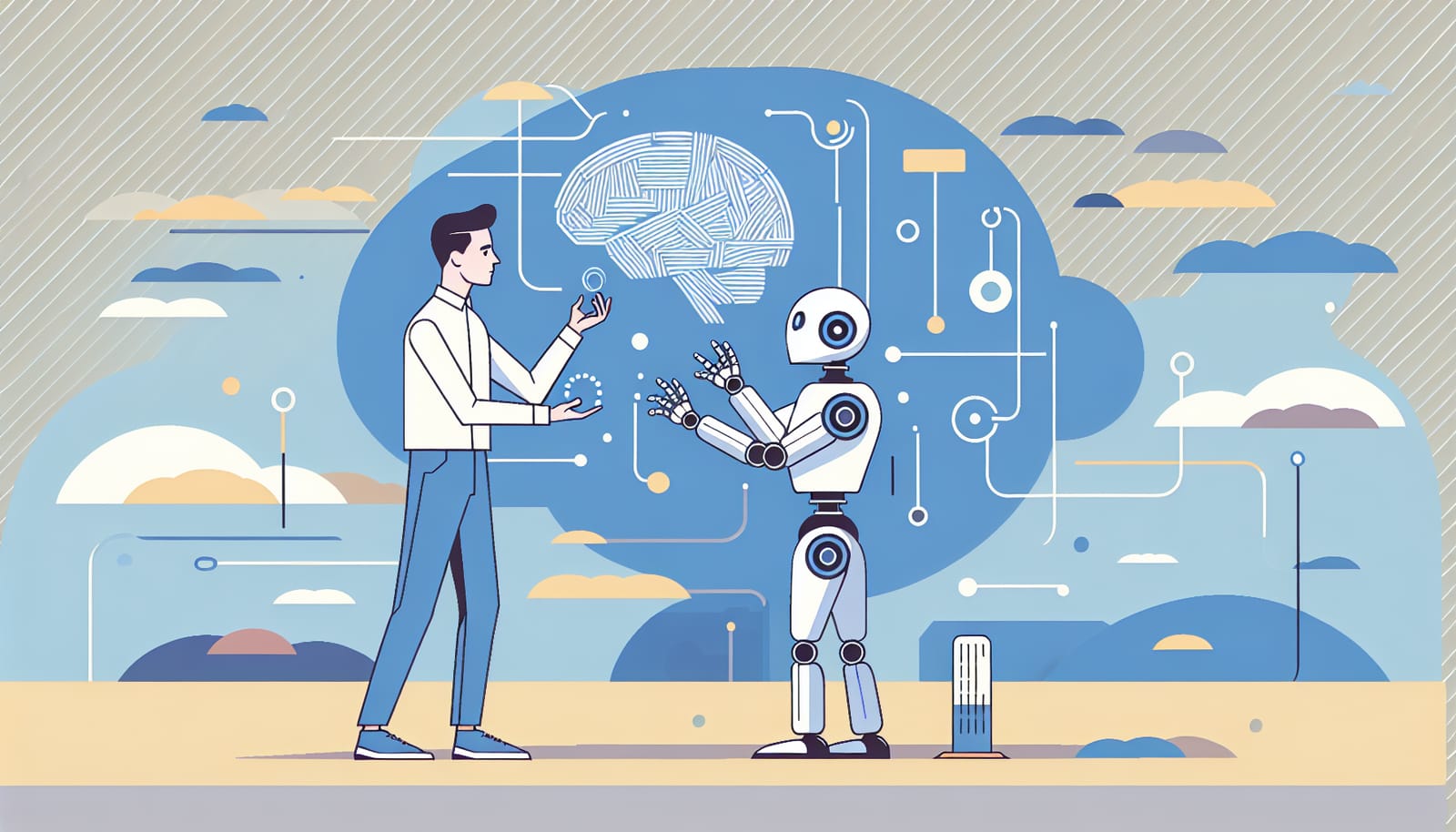In recent years, artificial intelligence (AI) has become a hot topic in both tech circles and popular culture. Movies, books, and even everyday conversations often depict AI as a super-intelligent entity that can solve problems, create art, and think outside the box. But is this really true? Can AI genuinely think creatively or innovatively? In this article, we’ll bust this myth and explore what AI can and cannot do, making it easy for everyone to understand.
Understanding AI: What Is It Really?
Before we dive into the myth of creative thinking in AI, it’s essential to understand what AI is. At its core, AI refers to computer systems designed to perform tasks that typically require human intelligence. These tasks can include problem-solving, understanding language, recognizing images, and even learning from experience. However, it’s important to note that AI operates based on algorithms and data rather than human emotions or intuition.
Think of AI as a very advanced tool. Just like a calculator helps you do math faster, AI helps analyze data and make predictions. It can process vast amounts of information quickly, but it does not possess consciousness or the ability to think independently like a human being.
The Nature of Creative Thinking
Creative thinking is a complex process that involves generating new ideas, seeing connections between seemingly unrelated concepts, and often, making intuitive leaps. Humans draw from their experiences, emotions, and unique perspectives to create art, solve problems, or innovate. This is where the myth starts to take shape: many people believe that AI can replicate this kind of thinking.
But can it? The short answer is no. AI can generate content that appears creative, such as writing stories or composing music, but it does so by analyzing patterns and existing data rather than by experiencing the world as humans do.
AI's Limitations in Creativity
AI's so-called "creativity" is largely based on existing information. For example, when an AI creates a painting, it looks at thousands of other paintings, analyzes styles, colors, and techniques, and then produces something that mimics those patterns. While this can sometimes lead to impressive results, it's not true creativity. AI lacks the ability to feel emotions, form personal opinions, or have original thoughts.
Imagine a chef who can create a new dish by experimenting with flavors, textures, and ingredients. This chef draws on their experiences, tastes, and culture to innovate. An AI, on the other hand, could only mix ingredients based on recipes it has already learned. It doesn’t "taste" or "feel" the food; it simply follows a set of rules.
The Illusion of Thinking Outside the Box
The phrase "thinking outside the box" implies creativity and innovation that break away from traditional approaches. AI might give the impression that it can do this by generating unique combinations and ideas. Still, it’s essential to recognize that these are essentially recombinations of existing ideas rather than genuinely new concepts.
Let’s consider the world of music. AI can compose a song by analyzing thousands of existing tracks and identifying common patterns. It can create a melody that sounds pleasing, but it doesn’t understand the emotional weight behind a ballad or the cultural significance of a folk tune. The depth of human experience and emotion simply isn’t part of its toolkit.
The Role of Human Imagination
While AI can assist in various creative processes, it is the human imagination that fuels true innovation. Humans can envision a world that doesn’t exist yet and dream up solutions to problems that haven’t been encountered before. This imaginative capacity is what drives art, literature, science, and countless other fields.
AI can enhance human creativity by handling repetitive tasks, allowing people to focus on the more imaginative aspects of their work. For example, a graphic designer can use AI to generate templates or color palettes, freeing them to explore new concepts and ideas.
The Future of AI and Creativity
As we move forward, the relationship between AI and creativity will likely continue to evolve. Researchers are exploring ways to make AI more adaptive and capable of generating solutions that may seem innovative. However, the fundamental limitations of AI remain: it cannot think for itself, nor can it create with the depth of feeling and personal experience that humans bring to their work.
In the future, we may see AI playing a more significant role in assisting creative professionals, providing tools that allow them to push the boundaries of their own creativity. But it is crucial to remember that AI should complement human efforts, not replace them.
Conclusion: Embracing the Power of Human Creativity
In conclusion, while AI can mimic certain aspects of creativity, it cannot think outside the box in the same way humans can. The myth that AI possesses creative thinking skills fails to recognize the depth of human emotion, experience, and imagination that informs true innovation.
As we embrace AI technology in our lives, let’s remember its role as a powerful tool designed to assist us rather than overshadow our creative potential. The future belongs to those who can combine human ingenuity with the capabilities of AI to explore new horizons.
So, the next time you hear someone claim that AI can think creatively, you’ll know it’s time to set the record straight—AI may be smart, but it can’t dream. Let's keep dreaming and creating together!


